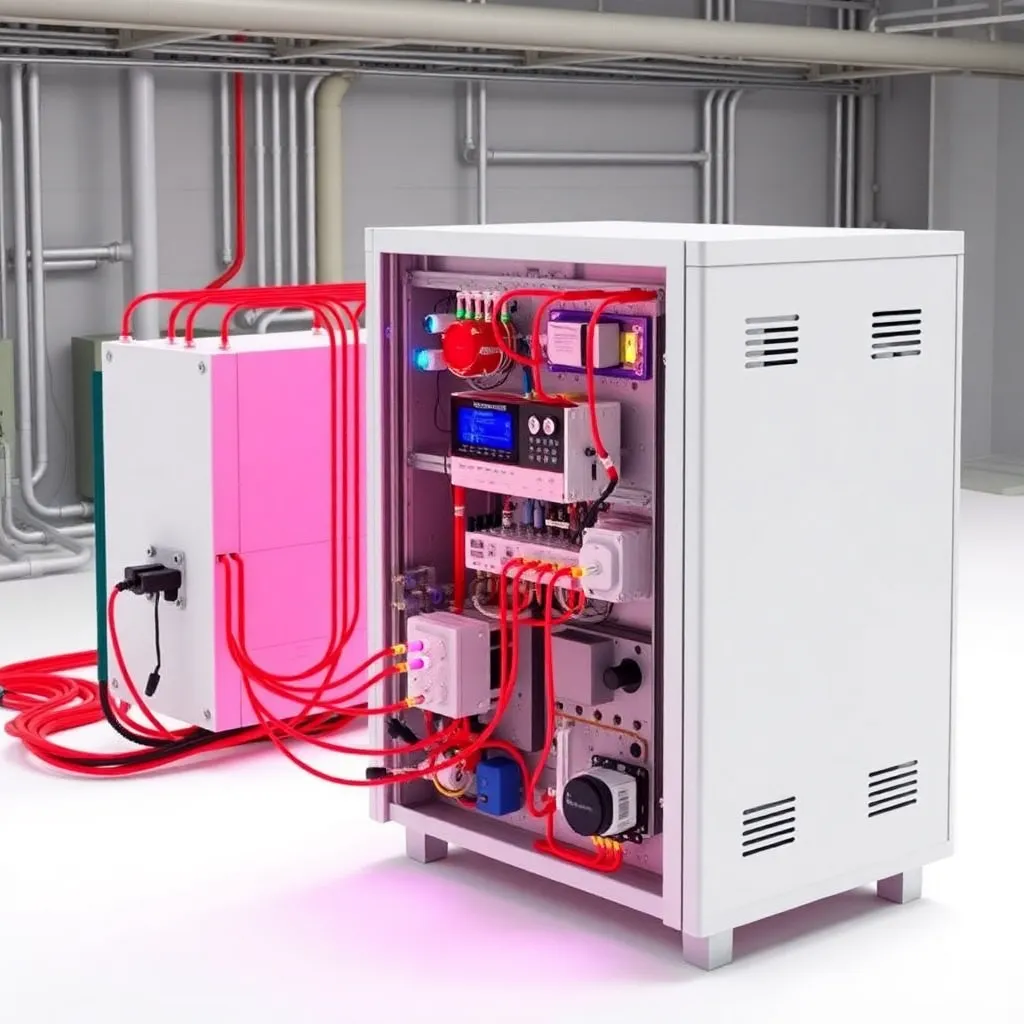
Multilevel inverters have emerged as a game-changer in high-power applications, offering numerous advantages over traditional two-level converters. One critical aspect of multilevel inverter performance is the elimination of unwanted harmonic distortions in the output waveform. Researchers from Aligarh Muslim University, King Saud University, and National Taiwan Normal University have developed a groundbreaking technique using the Quasi-Modified Newton Method to optimize the switching angles and effectively eliminate unwanted harmonics in cascaded H-bridge multilevel inverters. This innovative approach promises significant improvements in efficiency, accuracy, and computational speed, paving the way for more advanced and reliable power electronics solutions.
Multilevel Inverters: The Future of High-Power Conversions
Multilevel inverters have gained immense popularity in medium-voltage and high-power applications, such as renewable energy systems, electric traction, and smart grids. These inverters offer a range of benefits over traditional two-level converters, including reduced total harmonic distortion (THD), improved efficiency, and lower stress on power semiconductors. The key to unlocking these advantages lies in the modulation technique employed, which determines the switching angles and plays a crucial role in shaping the output waveform.
The Challenge of Harmonic Elimination
One of the primary challenges in multilevel inverter design is the effective elimination of unwanted harmonic components in the output voltage. These harmonics can lead to various problems in power systems, such as increased losses, reduced efficiency, and interference with sensitive equipment. Addressing this issue is crucial for ensuring high-quality power delivery and system reliability.
The Quasi-Modified Newton Method: A Breakthrough Approach
Researchers from Aligarh Muslim University, King Saud University, and National Taiwan Normal University have developed a novel technique using the Quasi-Modified Newton Method to optimize the switching angles and eliminate multiple harmonics in multilevel inverters. This method is an extension of the well-known Broyden’s method, a Quasi-Newton method widely used for solving systems of nonlinear equations.

The key advantages of the Quasi-Modified Newton Method include:
1. Reduced Computational Complexity: The method significantly reduces the number of function evaluations and arithmetic operations required compared to traditional Newton-based approaches.
2. Improved Accuracy: The method delivers more accurate results in determining the optimal switching angles for harmonic elimination.
3. No Partial Derivative Evaluation: Unlike Newton-Raphson methods, the Quasi-Modified Newton Method does not require the evaluation of partial derivatives, simplifying the implementation.
4. Faster Convergence: The method exhibits a super-linear convergence rate, allowing it to reach the optimal solution more efficiently.
5. Lower Root Mean Square Error (RMSE): The Quasi-Modified Newton Method outperforms the Newton-Raphson algorithm in terms of RMSE, a key metric for evaluating the accuracy of the solution.

Fig. 2
Applying the Quasi-Modified Newton Method to Cascaded H-Bridge Inverters
The researchers applied the Quasi-Modified Newton Method to solve the Selective Harmonic Elimination (SHE) problem in cascaded H-bridge multilevel inverters. By formulating the SHE problem as a set of nonlinear equations, the Quasi-Modified Newton Method was able to efficiently determine the optimal switching angles required to eliminate specific harmonics while maintaining the desired fundamental output voltage.
The method was tested on 5-level, 7-level, and 9-level cascaded H-bridge inverters, demonstrating its effectiveness in reducing THD compared to the traditional Newton-Raphson algorithm. The simulation and experimental results validated the superiority of the Quasi-Modified Newton Method in terms of convergence speed, accuracy, and computational efficiency.

Fig. 3
Implications and Future Directions
The successful application of the Quasi-Modified Newton Method in multilevel inverters has far-reaching implications for the power electronics industry. By enabling more effective harmonic elimination, this breakthrough technique can lead to:
1. Improved Power Quality: The reduced harmonic distortion in the output waveform translates to higher-quality power delivery, benefiting a wide range of applications.
2. Enhanced Energy Efficiency: The lower switching losses and improved waveform quality can contribute to increased energy efficiency in power conversion systems.
3. Increased Reliability: The reduced stress on power semiconductors due to better harmonic control can enhance the reliability and lifespan of multilevel inverter systems.
4. Expanded Adoption of Multilevel Inverters: The advantages offered by the Quasi-Modified Newton Method can further drive the adoption of multilevel inverters in high-power applications, unlocking new possibilities in renewable energy, electric vehicles, and industrial automation.

Fig. 4
Forging Ahead: Unlocking the Full Potential of Multilevel Inverters
The innovative work by the team from Aligarh Muslim University, King Saud University, and National Taiwan Normal University has unveiled a new frontier in multilevel inverter technology. By leveraging the power of the Quasi-Modified Newton Method, they have demonstrated a significant leap forward in harmonic elimination, paving the way for more efficient, accurate, and reliable power electronics solutions. As the demand for high-performance, energy-efficient power conversion systems continues to grow, this breakthrough research will undoubtedly play a crucial role in shaping the future of the power electronics industry.
Author credit: This article is based on research by Bisma Saif, Uzma Masood, Adil Sarwar, Shafiq Ahmad, Liang-Yin Huang, Hwa-Dong Liu.
For More Related Articles Click Here
